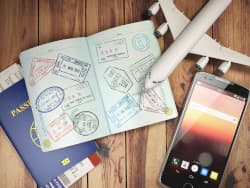Hi all,
What do you think about the means of transportation in Muscat ?
Is the network of means of transportation well developed?
What modes of transport are available?
Do you use them?
How much is a fare?
Are they relatively safe?
What is the mean of transportation you use the most in Muscat?
Thanks in advance for participating!
Greetings !
Let me share with all bloggers my 2 cents worth on Armand's queries :
There are primarily 5 types of transportation available here in Muscat.
1. Own Vehicles
2. Public Bus Service
3. Public Taxis (Shared)
4. Public Taxis (Engaged)
5. Public Coasters (or Baiza Bus as they are colloquially called)
Now briefly on each :
1. Own Vehicles By far the best, most convenient and easy mode of transport. Petrol is dirt cheap. Vehicles can be bought or hired very easily. All it takes is a valid Omani driving licence. Getting one for the Asian expatriate is a huge challenge given the different tests like Road Signs; Drum; Slope and finally the Road. European expatriates can produce their driving licence and get one that is valid in Oman. Roads are absolutely excellent and driving in Oman is a pleasure. Road accidents are far too many to even count and every month at least 50-odd people die in road accidents. It is a cause of huge concern. Over speeding is the main cause.
2. Public Bus Service Though there is a network of public buses, Ive never been on one in my last 12-odd years. Ive also noticed that most of these buses will ply empty most of the time, unlike in a place like Dubai in United Arab Emirates where the public buses are almost always packed. The fares, I assume, will be very cheap.
3. Public Taxis (Shared) This is the most common form of transport for all those who do not (yet) have a driving license, or cannot manage to get one for various reasons including financial, as getting a driving license can be a rather expensive affair. Taxis are driven in Oman only by the locals, unlike in Dubai, where most (or rather all) taxi drivers are expatriates. In Oman, most drivers are employed elsewhere and drive their taxis after office hours (all government establishments close the day by 2:30 p.m.). Taxis usually drive around town picking up and dropping people off all along the way. There is no fare meter and the rates are always agreed verbally. I guess the most common routes will have a standard fare.
4. Public Taxis (Engaged) In this type of taxi, the passenger(s) can hire the vehicle for their exclusive use, which means the taxi driver will not stop to pick-up other passengers along the way. The fares are certainly higher for this type of hire. The taxi though will be the same. While engaging the taxi, the passenger must specify that he wants to engage the taxi and decide on the fare prior to commencing the travel.
5. Public Coasters (or Baiza Bus as they are colloquially called) Another inexpensive way of travelling in Oman. This is a 25-seater van which will do the same laps like a taxi, only it will carry more people and stop wherever the passenger requests as long as it in the route ! This, Ive noticed is a very popular and common mode of transport at least here in Muscat.
Is the network of means of transportation well developed?
Not very much. The basics are in place. But beyond that theyre not very successful as far as I can see. There are no trains in Oman, for instance.
Muscat and all of the Sultanate of Oman is one of the safest places not only in the Middle East but across the entire world. Public transport is a very safe means of commuting. Availability is not 24x7 though. Women can travel relatively safely in Oman than they can in many other parts of the world.
I may have missed out on a lot of information, or may have not provided all the information. But, I guess the above details should suffice for a first-time visitor in case he / she is interested in knowing about the transport facilities in Muscat.












